

No one is immune from getting scammed online. Even if you have taken all the measures to protect yourself from the culprits, there might be a loophole or a new scam tactic that might catch you off guard. However, what would you do in the worst-case scenario if the scammer managed to lay hands on your personal information or money? Learn how to track down a scammer using open-source data in this X-Ray Contact guide.
Types of Scams and How to Identify Them
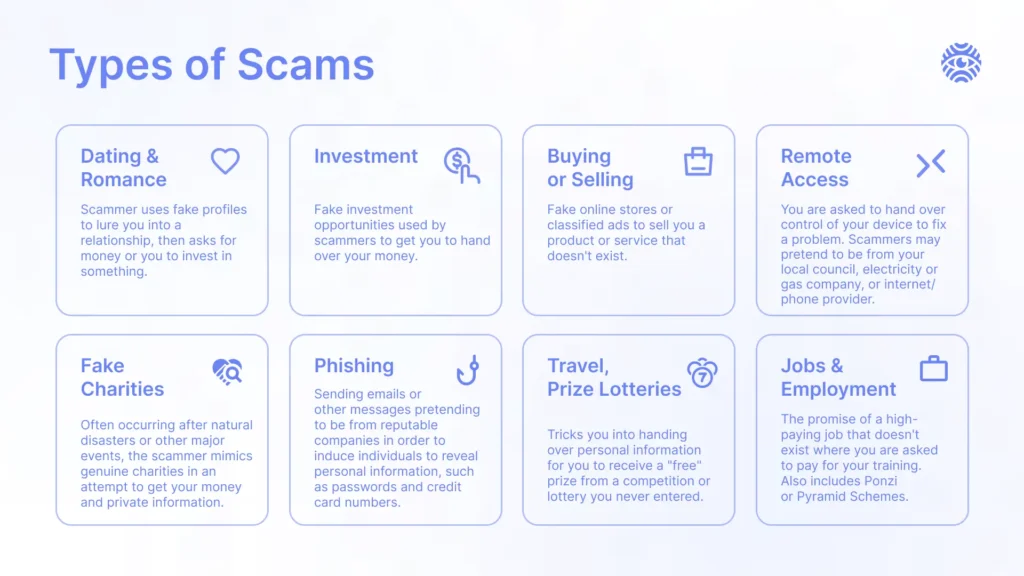
Scams come in various forms and can target individuals, businesses, or organizations. Here are some common types of fraud scenarios you should be aware of:
- Phishing. The goal is to obtain sensitive information such as usernames, passwords, credit card numbers, or other personal information. They often come in the form of deceptive emails, text messages, or fake websites that mimic legitimate ones. For instance, you might receive an email from a fake cybersecurity company that asks you to click on a virus-infested link to allegedly “protect your device.”
- Romance Scams. Such schemes involve criminals creating fake profiles on dating websites or social media platforms to start romantic relationships with their victims. They then exploit these relationships to steal money or personal information. On Instagram, scammers often steal photos of other real users to seem more legitimate and persuasive.
- Lottery Scams. These scams inform victims that they’ve won a lottery or prize but must pay a fee or provide personal data to claim their winnings. In reality, there are no prizes, and the scammers aim to steal money or identity information of the victims.
- Impersonation Scams. In this case, criminals pretend to be someone else, such as a government official, a family member in distress or a representative from a trusted organization, to deceive their victims into sending money or providing sensitive information. For example, you can receive a fake call from the bank, during which a scammer will ask you to reveal your CVV/CVC code.
- Investment Scams. Here, criminals promise high returns with little or no risk, often targeting individuals looking to invest their money. Common examples include Ponzi schemes, pyramid schemes and fraudulent investment opportunities. In reality, the scammers either give non-credible investment advice in return for money or just steal funds you have planned to invest.
- Ransomware Attacks. The scams are handled using a type of malware that encrypts a victim’s files or locks them out of their computer system. After that, hackers contact the target and demand payment for the decryption key or to regain access to their data. However, there’s no guarantee that the attacker will unlock the system even after getting paid.
- Charity Scams. Culprits exploit people’s emotions and generosity by posing as representatives of legitimate charities or creating fake charities to solicit donations. They often use natural disasters or other human tragedies as opportunities to scam unsuspecting victims.
- Employment Scams. Some criminals pretend to be employers offering job opportunities with attractive benefits or high salaries. Then, scammers request personal information or payment for training materials and background checks, but the job either doesn’t exist or isn’t quite as advertised. For example, you might receive a job offer as an interpreter for an international company but then find out that the firm specializes in dating scams.
How Can You Spot a Scam?
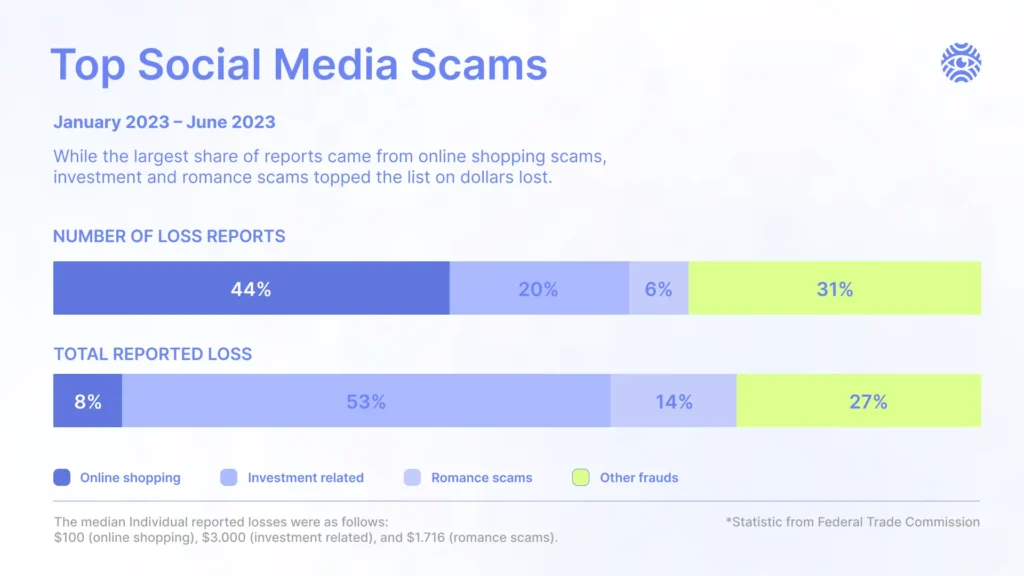
If you have a gut feeling that you have been targeted by a scammer, here are signs you should pay attention to in order to either confirm or disprove your suspicions:
- Pressure Tactics. Scammers try to rush you into making a decision without giving you time to think it over. Be cautious of high-pressure sales tactics or threats that demand immediate action.
- No Verifiable Information. Credible businesses have a physical address, phone number and online presence that you can easily find with the search engine. In case you can’t locate any credible information about the company or individual, it’s likely a scam.
- Unsolicited Contact. Avoid receiving phone calls or messages from unknown individuals or organizations, especially if they ask for personal information or money.
- Too Good to Be True. If an offer seems overly generous or promises unusually high returns for little effort, it’s likely a scam. Remember, legitimate opportunities rarely offer something for nothing in return.
- Emotional Manipulation. Scammers tend to use emotional appeals to persuade victims to act impulsively. Culprits prey on fear, greed or sympathy to pressure you into following their commands.
- Poor Grammar and Spelling. Many scams originate from non-native English speakers or are handled by the automated systems. Watch out for spelling errors, grammatical mistakes and awkward phrasing to expose a culprit.
- Requests for Personal Information. Legitimate organizations typically don’t try to get your sensitive information like passwords, Social Security numbers or bank account details via email or text. Therefore, in most cases, you should avoid sharing this information online at all.
- Unusual Payment Methods. Scammers often prefer untraceable payment methods like wire transfers, gift cards or cryptocurrency. It’s much safer to use regular bank transactions if you are making a deal with a person you don’t trust.
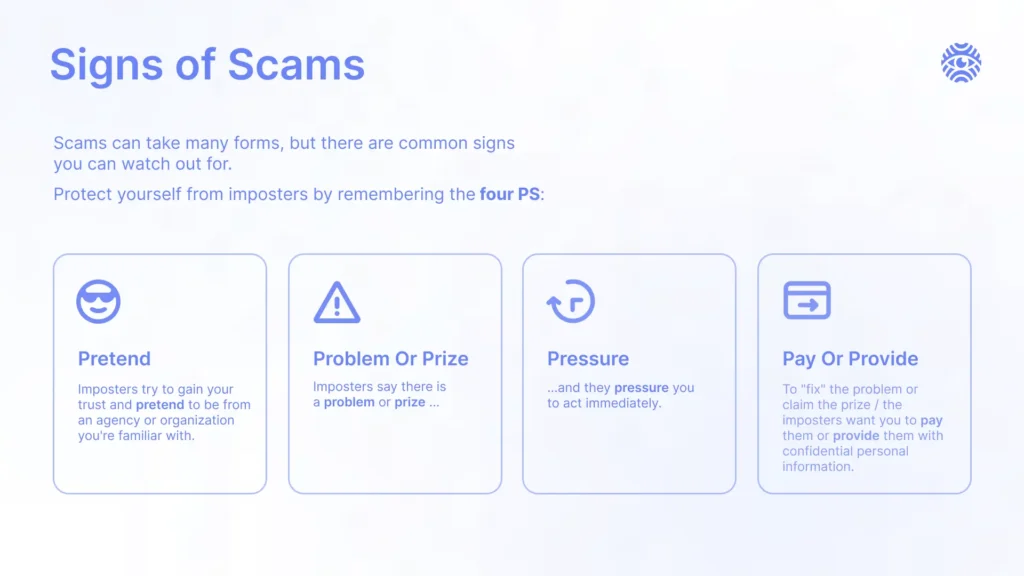
How To Track Down Someone Who Scammed You
In a situation where you have already become a victim of a scam and the damage has been done, you can still at least try to get your money back or bring the criminal to justice. The first step you should take is to find out who is behind a fake profile by unveiling the real identity of a scammer. Kick off the investigation with general-use publicly available aids you can access.
Go Through Scammer Databases
There are several online databases and forums where people report scams and scammers. Check websites like ScamWarners or Scam Detector to see if the scammer or their methods have been reported by others. These services are effective in scanning the credibility of websites or finding a specific user with a bad online reputation. Use any information you have about the scammer, such as their name, email address, phone number or the method they used to scam you, to search the databases.
Search With Google Image
If the scam involved fake profiles or images, use reverse image search tools like Google Images to see if the images have been used elsewhere online. Many scammers utilize stock photos and Instagram pictures of bloggers or celebrities to create a convincing online persona. This simple method can help identify if the images are stolen or if the scammer has used them under a different identity.
Advanced online criminals utilize photo modification tools, editing techniques and AI to alter stolen photos, so it’s harder to find the original image source. However, you can single out a fake picture even in such dire cases. Be cautious of such suspicious signs as mismatched lighting, unnatural shadows, or irregularities in the background of the picture. Pay attention to the discrepancies in metadata, such as timestamps or camera information, which can indicate potential tampering. Look for any elements or patterns in the image that may match other images online, even if they have been modified.
Do Some Social Media Research
Cross-search via other social networks can be a useful source of information to check the credibility of the account and its previous digital footprint. Let’s discuss how you can conduct cross-searches on various social media platforms in order to track down a person:
- Facebook. Use Facebook’s search function to look for the scammer’s personal details. You can also search for any groups or pages they may be associated with to learn more about their network or connections. Additionally, check the “About” section of their profile for any additional information they may have by chance provided.
- Twitter. Check out the platform’s advanced search feature to look up the scammer’s username, email address or even a phone number. You can also search for specific keywords related to the scam they organized, such as “dating scam,” “cryptocurrency scam,” or “identity theft.” Go through their tweets, replies and followers for any clues about their identity or activities. You can also try to contact users they have interacted with before, as they can be fellow victims or someone who is aware of the scammer’s real identity.
- Instagram. Inspect the scammer’s posts, networking and other examples of digital footprint for any signs of suspicious activity. For instance, some photos can include geotags that can reveal a criminal’s real location. Moreover, other victims might use the Instagram comment section to accuse the user of the scam. You can contact them and work together to unveil the true identity of a culprit.
- LinkedIn. Search for the scammer’s name on LinkedIn to see if they have a profile. Look at their work history, connections, and any endorsements they may have received. This method can help you verify their identity and gather information about the criminal’s professional background. You can contact the workplace of the scammer to inform them about their criminal behavior and possibly bring them to justice, especially if they have used their professional credibility to take advantage of you. For example, such an approach works best if the culprit has manipulated you to invest in a fake business by claiming that it is an opportunity provided by the financial firm they work for.
- Reddit. Online forums can be a goldmine when it comes to exposing scammers and collecting information about them. You can search for the scammer’s username or any keywords associated with the crime to find the fraudster’s digital footprint. Go through relevant subreddits and threads for any discussions or reports about the scam they perpetrated. You can also make your own post to see if others have had similar experiences. Furthermore, some scammers use Reddit to boast about their crimes with like-minded people. You can find this content and try to use it as evidence in order to bring the criminal to justice.
- Telegram. Consider reaching out to mutual contacts if you have any. They may possess valuable information about the person you’re trying to track down, such as their username or other relevant details. You can also leverage Telegram bots designed to assist in user searches. Add these tools to your contacts and utilize their functionalities to enhance your search for the culprit.
- Snapchat. Employ this social media platform to study your contacts and possibly find a scammer’s personal account. Explore the Quick Add feature, which suggests friends based on mutual connections. Access Quick Add through the “Add Friends” icon and review the suggested friends to see if the person you’re looking for appears in the list. In addition, use Snapchat’s Snap Map feature, especially if the person has enabled location sharing. Lastly, browse through Snapchat’s Public Stories and Discover content to see if the person has posted any public snaps or stories. Utilize relevant keywords or topics to narrow down your search and locate the person’s content more efficiently.
How to Track Down a Scammer With OSINT Tools
In a case when you want to reveal the identity of a scammer, using just search engines or scrolling through social media might not be enough. Such in-depth investigations require you to search for an individual with specialized instruments.
Use X-Ray Contact to Expose a Scammer
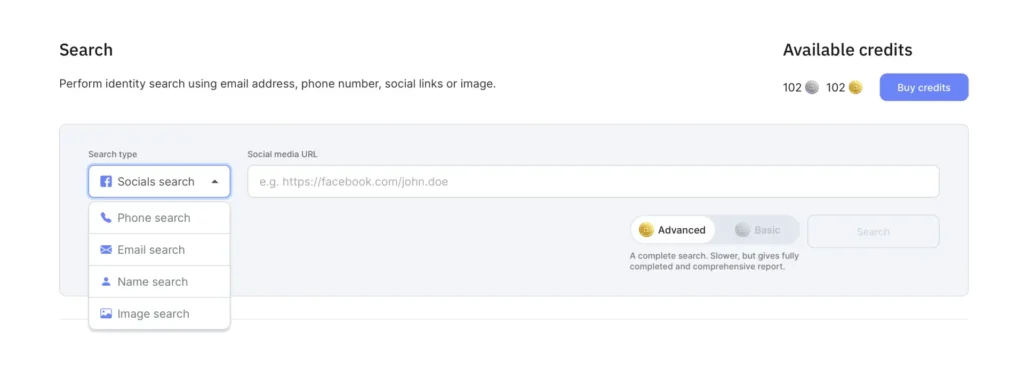
X-Ray Contact is a data aggregator that can help you track down a scammer through different search channels. This tool has various search options so that you can attempt to find a person via their Name, Phone Number, Email Address or Socials. You can use the service even if you have no previous OSINT search experience. The UX design is amateur-friendly, and you can conduct an investigation just in a few clicks:
- Visit the main page and select the “Platform” tab located in the website header.
- Choose whichever search channel suits your needs. For example, you can look up a name, phone number or email address, do a social media analysis or do a Reverse Image Search. You can look up the scammer with a few channels one by one in case one of the entries provides more information.
- X-Ray Contact will provide you with a person of interest report if the individual’s details have previously been included in the databases of our providers. You can get such results as real name and contacts, links to social media sites and services, details about relatives, occupation, location, education, image results and more. The details depend on which type of information has been posted online by the user and aggregated by the providers.
How to Protect Yourself from Scammers
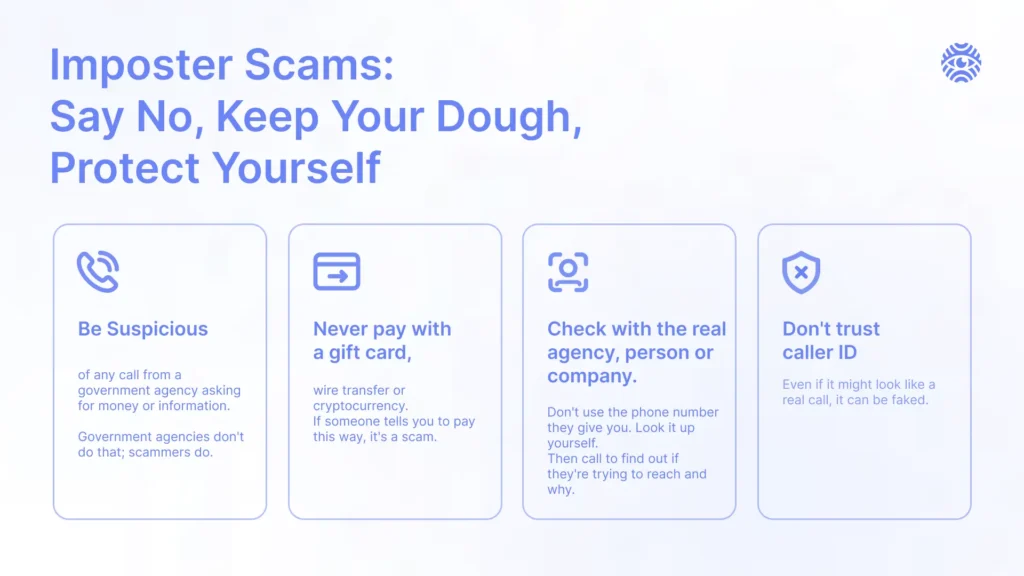
No matter whether you have dodged the bullet or become prey to the scammer, you should know the ways to protect yourself online in the future. Follow these rules to avoid fraudsters and protect your digital identity:
- Secure Your Accounts. Use strong, unique passwords for each of your online accounts, and enable two-factor authentication whenever possible. Don’t forget to regularly update your passwords.
- Don’t Interact With Suspicious Content. Be wary of unsolicited emails, phone calls, texts or social media messages from unknown users or organizations. Avoid clicking on links or downloading attachments from suspicious sources, as they may contain malware or lead to phishing websites.
- Choose Safe Banking Methods. When making online purchases or transactions, use secure payment types such as credit cards or payment platforms with buyer protection. Avoid sending money or sharing financial details with unknown individuals or unverified websites.
- Minimize Your Digital Footprint. Limit the amount of personal information you share online. Avoid posting sensitive information, such as your full name, address, or financial details. Review your privacy settings and adjust them to control who can see your profile and posts.
- Don’t Ignore Your Gut Feeling. Trust your instincts and remain vigilant when interacting online. If something seems suspicious, it’s probably a scam. Always research and verify information before taking any action. Don’t hesitate to seek advice from credible sources like banks or social media support teams if you’re unsure.
What Should You Do Next After Exposing a Scammer?
If you encounter suspicious or fraudulent activity online, report it to the appropriate authorities, such as your bank, the Federal Trade Commission or the Internet Crime Complaint Center. Reporting scams helps to raise awareness and prevent others from falling victim to similar schemes. If the scam involves illegal activities or fraud, escalate the issue to officials, such as law enforcement and consumer protection agencies. Don’t shy away from seeking the support of the authorities, as you can save other innocent users from being scammed.
Conclusion
Even though it can be hard to track down an online scammer, you can attempt to find their real identity based on their digital footprint. Combine such methods as X-Ray Contact OSINT investigation, scammer photo search with Google Image and a manual social media analysis to get the most in-depth results and bring action against a fraudster yourself.


